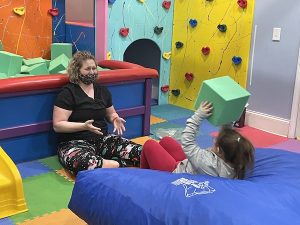Physical Therapy
What is Physical Therapy (PT)?
Pediatric physical therapy can help babies, toddlers, children, and teenagers regain mobility and decrease pain in a variety of situations. Physical therapists have expertise in movement, motor development, and body function (eg, strength and endurance). In addition, physical therapists provide recommendations and training in orthotics, prosthetics, adaptive equipment, custom wheelchair seating systems, and assistive technology.
Who can PT help?
 Some of the pediatric conditions that physical therapy can help treat include:
Some of the pediatric conditions that physical therapy can help treat include:
- Injuries. If a child, adolescent, or teenager is injured in a car accident or while playing sports, working with a pediatric physical therapist can help. Orthopedic conditions can also be treated with sports injuries and/or fractures.
- Surgery. When a younger patient needs surgery it can often result in pain and decreased range of motion during recovery. Physical therapy can help.
- Other Conditions. When children are born with or develop musculoskeletal or neurological conditions, physical therapy can help them attain their physical best. There are many familiar childhood disorders and diseases that present with movement dysfunction and motor skill issues. These include Cerebral Palsy, Autism, Down Syndrome, Muscular Dystrophy and associated disorders, Spina Bifida, Juvenile Rheumatoid Arthritis, Arthrogryposis, Cardio-Pulmonary Disorders, Cystic Fibrosis, Cancer, and Traumatic Brain Injury. In addition, many children present with hypotonia and developmental coordination disorder without a formal diagnosis. Orthopedic conditions that can also be treated with PT include scoliosis, back pain, sports injuries, fractures, and orthopedic surgeries.
